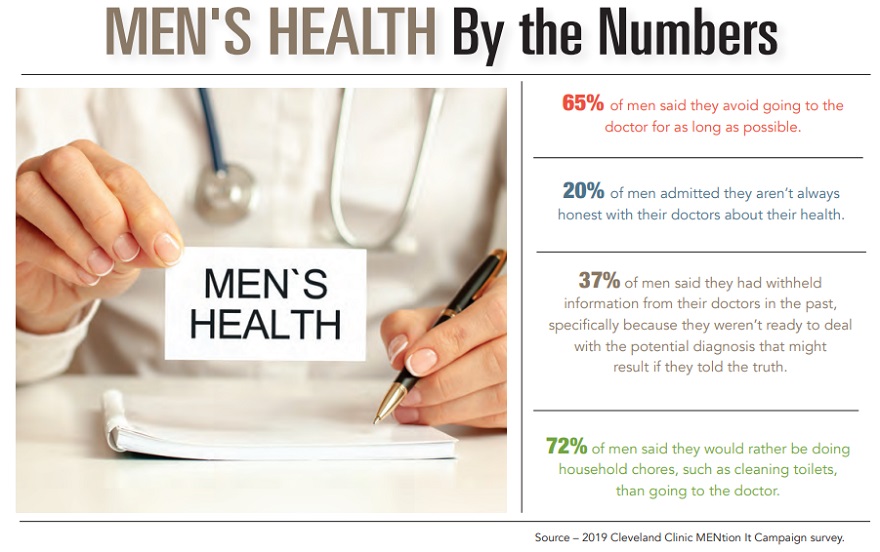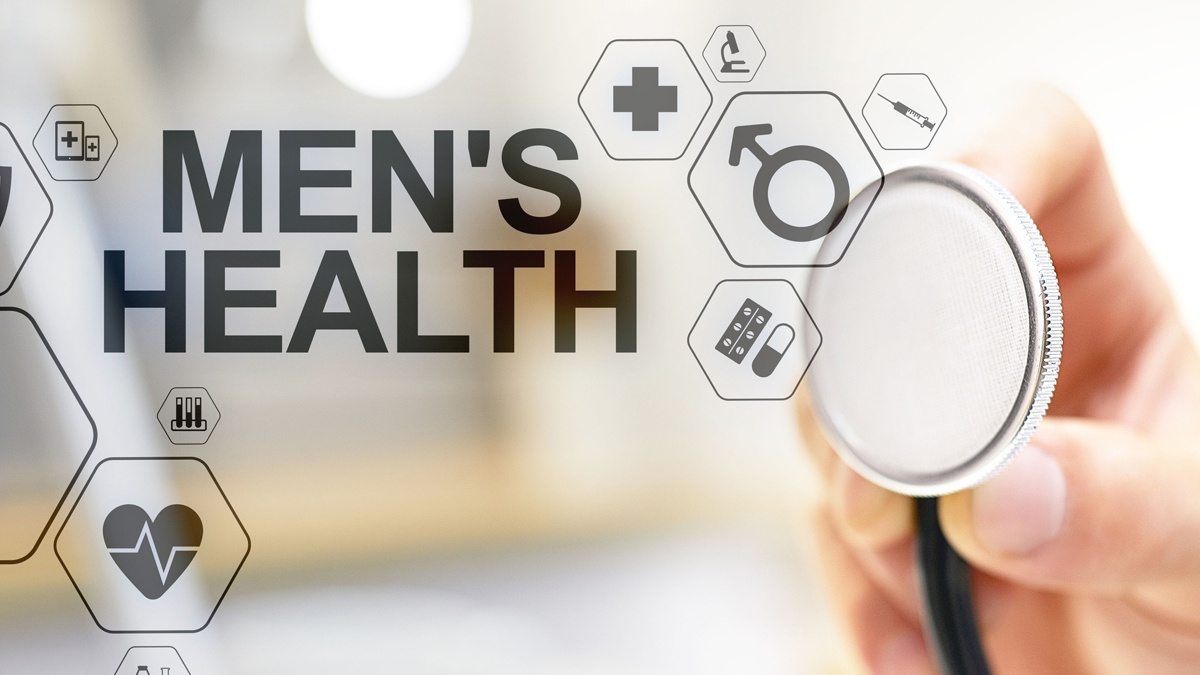A Cleveland Clinic survey of more than 500 men between the ages of 18 and 70 in the United States found that only 3 in 5 men get an annual physical, and just over 40% go to a doctor only when they fear they have a serious medical condition.
Stuart Markovitz, M.D., an internal medicine specialist, has practiced medicine for more than 40 years – the last five years exclusively treating men as medical director of the Charleston Men’s Clinic.
“Men approach their health differently and consume health care differently than women,” he said. “Men are less comfortable with the health system, understand it less and negotiate it less effectively than women. Guys often wait until the check engine light goes on to see a doctor rather than going in for a tuneup or maintenance visit.”
Efforts to improve men’s health rest with the theory that wanting good health is compatible with masculinity. Fortunately, their attitudes are changing, and it is becoming more socially acceptable for men to talk about their health – and it’s clear that they want answers.
It’s critical to understand that erectile dysfunction, decreased sex drive, low energy, “brain fog,” lack of motivation, decreased job performance, feeling anxious or mildly depressed, difficulty losing weight or gaining muscle mass are “symptoms – not a diagnosis,” Dr. Markovitz pointed out.
Unfortunately, he said, most medical providers are not trained in evaluating and treating men’s hormonal and sexual issues. Some are uncomfortable talking about these issues with their patients, and time constraints and medical economics frequently are barriers to evaluation, diagnosis and treatment.
A consequence of not getting medically evaluated is that early warning signs of serious conditions might be missed. ED, for instance, a taboo subject for many men, frequently is the result of underlying health conditions such as cardiovascular disease, metabolic syndrome, diabetes and sleep apnea. In addition, “silent” problems such high blood pressure, lipid abnormalities, thyroid issues and prostate cancer may go undetected.
Some men avoid seeing their doctor to avoid an embarrassing or uncomfortable physical examination.
“Actually, I seldom need to examine a guy physically or do a digital rectal/prostate exam in evaluating someone,” said Dr. Markovitz. “Taking a thorough history, checking vital signs and performing standard laboratory testing is all that usually needs to be done.”
Finally, according to Dr. Markovitz, one of the major obstacles that keeps men from receiving treatment for medical issues is an “environmental deficiency” in the health care system. He believes it is important to offer services in a setting that meets men’s unique needs.
“Most medical offices and facilities are not particularly men-friendly places. They are predominantly female staffed and most primary providers are now women,” he explained,
“The Charleston Men’s Clinic is a place where men can feel comfortable talking about guy issues with other guys and get expert answers to their questions in an empathetic, discreet, confidential and no-drama environment,” he added.
Jerome Aya-Ay, M.D., co-founder and chief executive officer of Palmetto Proactive Healthcare, said that men often dismiss early symptoms of a disease. For example, men may continue to push through increased fatigue and occasional shortness of breath. Later, when they experience chest pain during a heart attack, they learn that those symptoms were clues of coronary artery disease.
“The health care system may also contribute to patient hesitancy. Who wants to go to see the doctor when it is unclear how much it would cost?” he asked.
While Dr. Aya-Ay believes women are continually engaged in their health, the same isn’t true for most men.
“After well-child checks at the pediatrician, males visit doctors for episodic sick care visits when needed. When willing to re-establish care, it is often in their 40s, when men decide it is time to take care of themselves,” he pointed out.
He added that if men do not have a relationship with a doctor, they may miss the opportunity to learn about their health risks as well as the actions they can take to lower these risks.
“For example, 44-year-old ‘Hesitant Harry’ comes in at the urging of his family, and we learn that, based on his exam and lab work, he is at increased risk for heart attack and stroke. We can work with him to discuss lifestyle modifications and prescribe medications, if needed, to lower these risks.”
Dr. Aya-Ay explained that Palmetto Proactive Healthcare’s direct primary care model, “reduces the hesitancy pain point. We are accessible for same day or next day appointments if necessary. We have an affordable and clearly priced monthly membership fee. There are no surprise bills weeks or months later for our services. We strive to build relationships with patients so that they know we are available to address their needs.”
By John Torsiello

